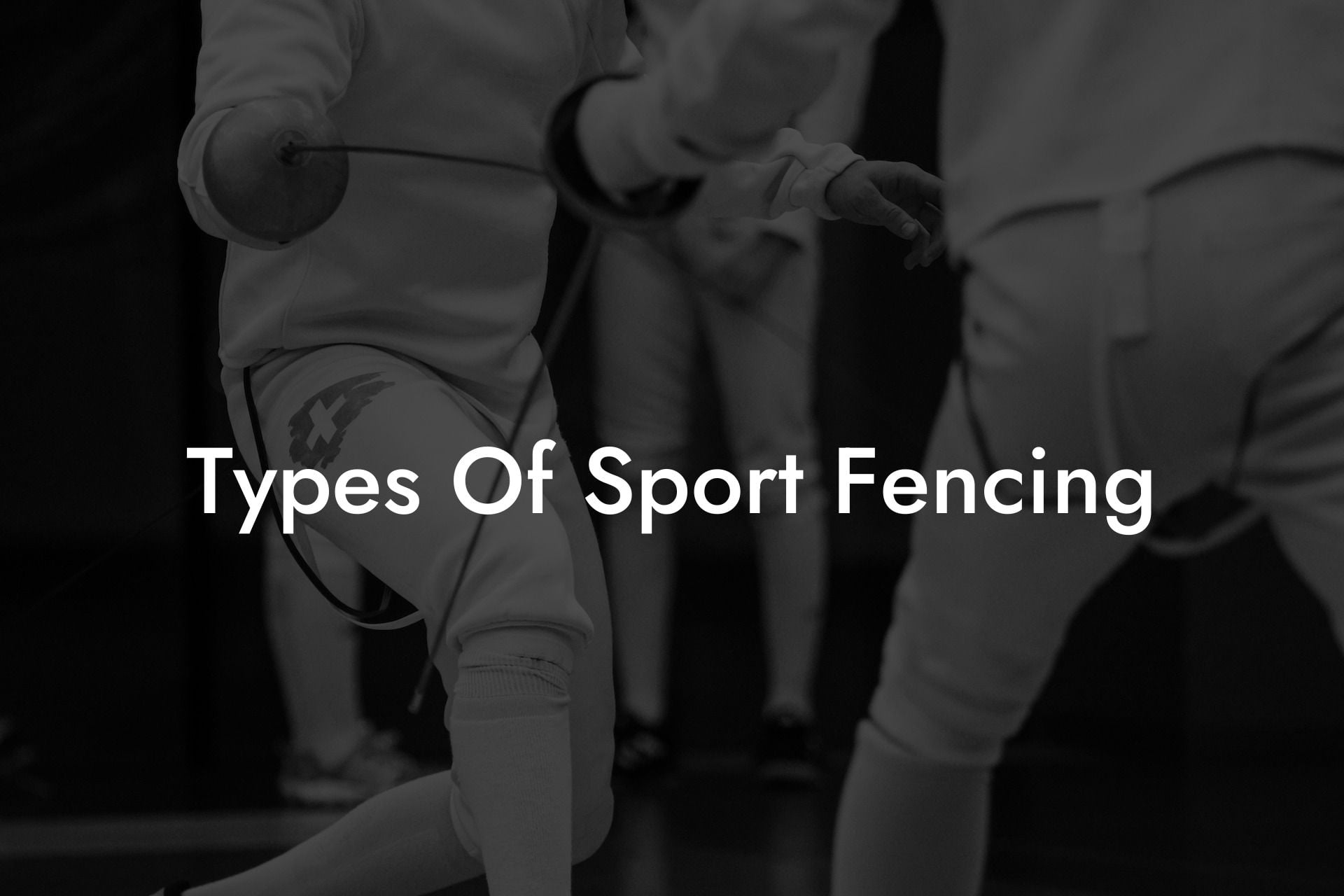Have you ever been intrigued by the world of sport fencing and wondered about the different types it includes? Well, you've come to the right place! Anchorage Fencing Club is here to guide you through the various types of sport fencing with an in-depth look at how each one is unique and which might suit you best.
Types Of Sport Fencing Table of Contents
The Three Main Types of Sport Fencing
In modern sport fencing, there are primarily three types, each using a different weapon: foil, épée, and sabre. These types have evolved over time and have distinct rules, techniques, and strategies, making them quite unique from each other. Let's dive into each of them!
Foil Fencing
Foil fencing is often considered the basic type of sport fencing, with many beginners starting their fencing journey here. It’s known as a light-weight weapon with a smaller rectangular-shaped blade.
- Target Area: In foil fencing, the target area is restricted to the torso, including the front and back. Hits outside of this area are considered off-target and do not result in points.
- Rules: One key rule in foil fencing is the "right of way" or "priority," which dictates which fencer can earn a point during simultaneous attacks. Whoever initiates the attack first has the right of way and can earn the point if their opponent fails to defend.
- Techniques: There is a significant emphasis on technique, footwork, and speed in foil fencing, making it a perfect starting point for understanding strategic elements of fencing.
Épée Fencing
The épée is the heaviest of the three fencing weapons and has a stiffer, triangular-shaped blade. Fencers use a pistol-grip or French grip, with the latter allowing for longer reach.
- Target Area: In épée fencing, the entire body, from head to toe, is considered the target area, which adds the importance of precise and accurate strikes.
- Rules: Unlike foil, épée fencing does not have the right of way rule, making it a pure dueling weapon. In this style, the first fencer to land a clean hit scores a point. Simultaneous hits result in points for both fencers.
- Techniques: Épée fencing requires a blend of defensive and offensive skills, a strong sense of distance and timing, and quick reflexes due to the expanded target area and lack of priority rule.
Sabre Fencing
The sabre is characterized by its curved guard and a flexible, V-shaped blade. It’s the only weapon in fencing that allows for both cutting and thrusting actions.
- Target Area: In sabre fencing, the target area includes everything above the waist, from the head, torso, and arms.
- Rules: Like foil, sabre fencing uses the right-of-way rule to determine which fencer can earn points during an exchange.
- Techniques: Sabre fencing is known for its fast pace and explosive actions, as fencers often use their entire body in a combination of cuts and thrusts to score points.
Types Of Sport Fencing Example:
Imagine you're attending a fencing club for the first time and you're given the option to choose between foil, épée, and sabre fencing. To make the right choice, consider your preferred playstyle and the techniques that interest you. If you enjoy the idea of a fast-paced, strategic game with a limited target area, foil fencing might be for you. If you'd rather test your skill in a more tactical and patient match, where any exposed body part can be a valid target, épée fencing could be ideal. If you're drawn to a more aggressive and dynamic style of play with both cutting and thrusting actions, sabre fencing is the way to go!
Now that you have a better understanding of the different types of sport fencing, why not dive in and give the sport a try? Explore the resources and guides at Anchorage Fencing Club, and don't forget to share this article with friends who might be interested in this fascinating sport. Whether you're a beginner or a seasoned fencer, Anchorage Fencing Club will provide you with the knowledge and tools needed to excel in the world of fencing!













